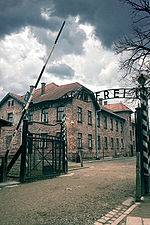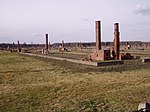Siegfried Lederer's escape from Auschwitz

On the night of 5 April 1944, Siegfried Lederer, a Czech Jew, escaped from the Auschwitz concentration camp wearing an SS uniform provided by SS-Rottenführer Viktor Pestek. Pestek opposed the Holocaust; he was a devout Catholic and was infatuated with Renée Neumann, a Jewish prisoner. Pestek accompanied Lederer out of the camp, and the two men traveled together to the Protectorate of Bohemia and Moravia to obtain false documents for Neumann and her mother. Lederer, a former Czechoslovak Army officer and member of the Czech resistance, tried unsuccessfully to warn the Jews at Theresienstadt Ghetto about the mass murders at Auschwitz. He and Pestek returned to Auschwitz in an attempt to rescue Neumann and her mother. Pestek was arrested under disputed circumstances and later executed. Lederer returned to occupied Czechoslovakia, where he rejoined the resistance movement and attempted to smuggle a report on Auschwitz to the International Committee of the Red Cross in Switzerland. After the war he remained in Czechoslovakia. The story of the escape was retold by Lederer and writers including historian Erich Kulka.
Excerpt from the Wikipedia article Siegfried Lederer's escape from Auschwitz (License: CC BY-SA 3.0, Authors, Images).Siegfried Lederer's escape from Auschwitz
II Rampa wyładowcza, gmina Oświęcim
Geographical coordinates (GPS) Address Nearby Places Show on map
Geographical coordinates (GPS)
| Latitude | Longitude |
|---|---|
| N 50.035833333333 ° | E 19.178333333333 ° |
Address
II Rampa wyładowcza
32-600 gmina Oświęcim
Lesser Poland Voivodeship, Poland
Open on Google Maps











